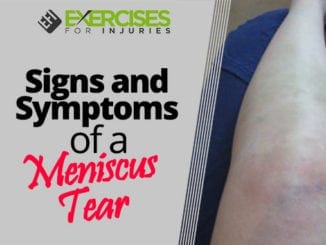
Meniscus tears are common knee injuries that often occur during sports. The meniscus is a crescent-shaped fibrous band of cartilage that provides shock absorption and helps with joint stability, especially during twisting activities. Understanding it and your treatment options is essential because of this injury.
The recovery time and the potential for further damage depends on the tear’s type and extent. Meniscus tears can be either partial or complete. Complete tears are more challenging to treat than partial ones because they expose the underlying tissue to increased stress. But there’s no need to panic – most people recover from a torn meniscus within three months with the help of physical therapy and some simple home remedies.
Maintaining a healthy lifestyle is essential for everyone, especially for active people. Unfortunately, injuries are also common among active individuals, especially those participating in contact sports.
All about Torn Meniscus
A torn meniscus is one of the more common knee injuries among contact and collision athletes. The meniscus is crescent-shaped cartilage that cushions your knees when you squat or bend. A direct knee hit or an awkward fall that concentrates all of his weight on one spot can cause a meniscus injury. When the meniscus is damaged, it does not work correctly.
It can be painful and annoying, but it can also lead to long-term problems later in life if not adequately treated and managed right away. Thus, it’s essential to know everything there is to know about this injury, its symptoms, and its treatments – so you can prevent or reduce their frequency or severity where possible.
What is Meniscus Tear?
Meniscus tears are prevalent in contact sports and recreational activities that involve running or jumping. They can be a minor nuisance or a significant hindrance. It can be painful, mainly due to a binding force or impact like during sports activities such as running, jumping, or cutting. Depending on the severity of the tear, meniscus injuries may require rest, ice, and compression to help accelerate healing. Or surgery, followed by an extended period of non-weight-bearing to allow the knee to heal fully. The recovery process for a torn meniscus is lengthy and challenging. Still, there are several approaches you can take to hasten your recovery and get back into the game sooner than later.
When you tear your meniscus, important shock-absorbing cartilage in your knee joint, you’ll need surgery to repair it. The type of surgery you have will depend on the severity of the tear and other factors. Your doctor will also recommend physical therapy and rehabilitation after your surgery to help you recover as quickly as possible.
Meniscus tear surgery is typically performed arthroscopically using a small camera and surgical instruments inserted into the joint through tiny incisions.
There are two main types of meniscus repair: partial meniscectomy and restoration of the remaining parts of the torn meniscus with sutures or staples.
The primary goal of this repair is to reduce pain, swelling, and stiffness caused by a torn meniscus. An untreated can lead to arthritis which occurs earlier than if the tear were treated sooner.
Hey,
I got some information.
Here is an excellent little YouTube video.
The first four minutes are a good description of meniscus tears.
CLICK HERE to watch the YouTube video.
I am not sure about the last minute of the video. I am not sure how successful their medical intervention is.
If you are looking for knee injury exercise, CLICK HERE.
Causes, Symptoms, and Natural Treatments
Rick Kaselj, MS
.





